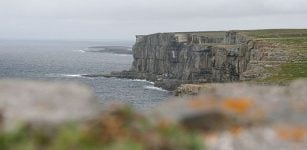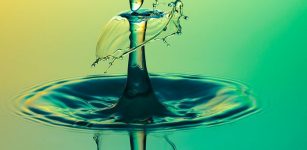First Life On Earth May Come From Primitive Water Ponds – Not Oceans
Eddie Gonzales Jr. – MessageToEagle.com – First life on Earth most likely started in primitive water ponds (with only 10 centimeters deep) and not in oceans, suggests a new study.
MIT researchers say these ponds had a good chance to react with other compounds and give rise to the first living organisms, but in deep oceans, it was harder for nitrogen – a key ingredient for life on Earth – to establish.
“Our overall message is, if you think the origin of life required fixed nitrogen, as many people do, then it’s tough to have the origin of life happen in the ocean,” lead author Sukrit Ranjan, a postdoc in MIT’s Department of Earth, Atmospheric and Planetary Sciences (EAPS), said in a press release.
“It’s much easier to have that happen in a pond.”
According to a hypothesis of life origin, free-floating RNA (ribonucleic acid, a molecule that today helps encode our genetic information) molecules had been chemically induced to form the first molecular chains of life after they contacted with the nitrogenous oxides. Those nitrogenous oxides in the water bodies were generated by lightning in the atmosphere and then drained down into the water
Nitrogenous oxides were likely deposited in bodies of water, including oceans and ponds, as remnants of the breakdown of nitrogen in Earth’s atmosphere.Those nitrogenous oxides in the water bodies were generated by an extremely energetic event, known as lightning in the atmosphere and then drained down into the water.
“Lightning is like a really intense bomb going off,” Ranjan says. “It produces enough energy that it breaks that triple bond in our atmospheric nitrogen gas, to produce nitrogenous oxides that can then rain down into water bodies.”
Additionally, nitrogenous oxides in water can be broken down via interactions with the sun’s ultraviolet light, and also with dissolved iron sloughed off from primitive oceanic rocks. These two processes could have destroyed a significant portion of nitrogenous oxides in the ocean or highly “suppress the concentrations of nitrogenous oxides in the ocean by a factor of 1,000, according to Sukrit Ranjan.
In shallow ponds, on the other hand, life would have had a better chance to take hold. That’s mainly because ponds have much less volume over which compounds can be diluted
“These ponds could have been from 10 to 100 centimeters deep, with a surface area of tens of square meters or larger,” said Ranjan.
“They would have been similar to Don Juan Pond in Antarctica today, which has a summer seasonal depth of about 10 centimeters.”
The shallower the pond, the greater the chance nitrogenous oxides would have had to interact with other molecules, according to the study. More studies are needed.
Written by Eddie Gonzales Jr. – MessageToEagle.com Staff Writer











